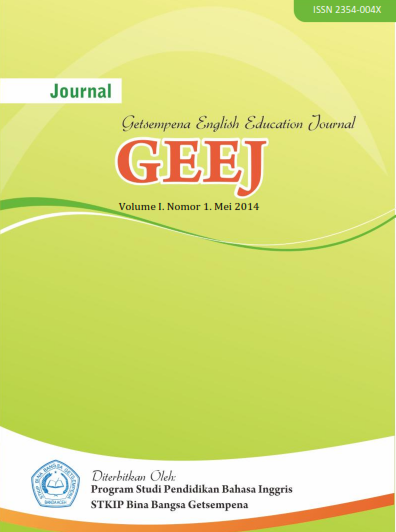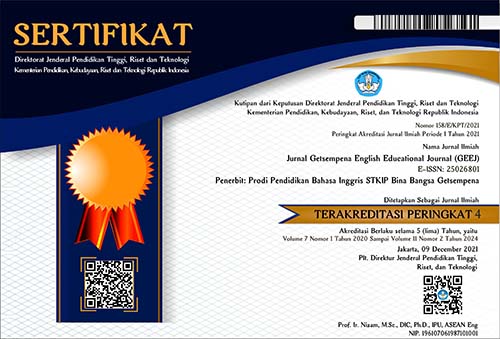THE EFFECTIVENESS OF ERROR CORRECTION FEEDBACK IN IMPROVING STUDENTS’ WRITING SKILL
( An Experimental Study at English Department of UIN-Ar-Raniry)
Abstract
Writing is the way of expressing ideas or opinions in written words. Teaching how to write effectively is one of the most important life-long skills educators impart to their students. When teaching writing, educators must be sure to select resources and support materials that not only aid them in teaching how to write, but that will also be the most effective in helping their students learn to write. As the last stage of writing process, rivising designed to reexamine and reevaluate the students’ error in a piece of writing. In this case, error correction feedback become on of important steps to applied in teaching English Writing in order to improve students’ writing proficiency. Therefore, this study attempts to identify the effectiveness of error correction feedback in improving students’ writing skill at English Department of UIN Ar-Raniry Banda Aceh. The correction focused on the five aspects of writing; content, organization, grammar, word choice and mechanics. This study employed an experimental design. It is intended to find out any significant difference on the students’ writing before and after they are taught by applying error correction feedback. The technique of data analysis is using T-test. Having analyzed the statistical computation, it can be concluded that the difference between the two means is significant. By those facts, Ho is rejected and Ha is accepted. Thus, Error Correction Feedback is effective in improving the students’ writing ability.
References
Arikunto, Suharsimi. 2002. Prosedur Penelitian Suatu Pendekatan Praktek. Jakarta: Rineka Cipta.
Ary, Donald et al. 1985. Introduction to Research in Education. New York: CBS College Publishing.
Calkins, L. Cormick,Mc.(1986).The Art of Teaching Writing (1st ed).Partsouth: Heinemann.
Cinthyia, B.,&Frydenberg,J. (2008). Writing to Communicate: Paragraphs and Essays (3rd ed.). New York: Pearson Education,Inc.
Gay, L.R. 1992. Educational Research Competencies for Analysis and Application. New York: Macmillan Publishing Company.
Gebard. Jerry,G.(1996). Teaching English as a Foreign or Second Language: A Self Development and Methodology Guides. Michigan: The University of Michigan Press.
Hairston, Maxine C. (1986). Contemporary Composition (4th ed.). Boston :Houghton Mifflin company.
Hairstone, Maxine C. (1986). Contemporary Composition (4th ed). Boston: Houghton Mifflin Company.
Harmer, Jeremy. 2007. How to Teach English. Edinburgh Gate: Pearson Education Limited.
Heaton, J.B. 1975. Writing English Language Test. London, Longman group limited.
Hendrickson, J.M. (1984). Error Analysis and Error Correction in Language Teaching. Singapore: SEAMEO Regional Language Centre.
Kroll, B. (1991). Teaching Writing in the ESL context. In Teaching English as a Second or Foreign Language (2nd ed). Boston: Heinle and Heinle.
Lauren, Spencer. (2005). A Step-By-Step Guide to Narrative Writing. New York: The Rosen Publishing Group.
Nunan, David. 1992. Research Methods in Language Learning. Cambridge: Cambridge University Press.
Oshima, Alice. (1991). Writing Academic English (3rd ed.). New York: Pearson Education,Inc.
Penprapa Charoensuk, The Relationship between English Writing Classroom and Asia Cultural Issue when Using Peer Feedback, an Executive Journal, Bangkok University, P.154-159.
Peregoy, Suzanne F., & Boyle.(1997). Reading, Writing & Learning in ESL (2nd ed)New York: Longman.
Rollinson,P. (2005). Using Peer Feedback in the ESL writing Class. ELT journal, V.59, n.1. p.23-30.
Walton, J. ( 2010). The Writer's Handbook 2011: The Complete Guide for all Writers. England: Macmillan Publishers.
White, R., & Arndt, V. (1991). New Ways in Teaching Writing. USA: Cambridge University Press.
























